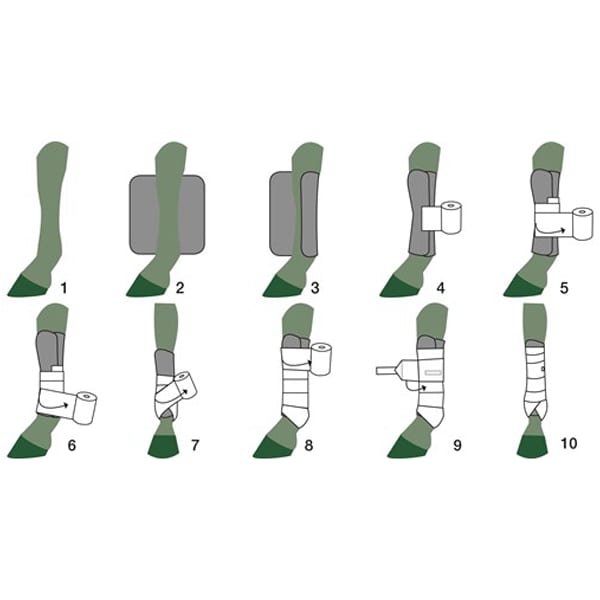1: Start with a clean and dry leg.
2: Put on a bandage pad if you wish. If you don’t want a bandage pad (short and long is available) then go to steps 4.
3: Overlap the pad and make sure it fits snugly against the leg without pulling too hard. Make sure that the hair on the legs is pointing down so that it does not lie unevenly.
4: Make sure that the pad is rolled correctly. You may need to make a test wrap first so that the Velcro ends up on the outside of the leg when you finish. Start wrapping in the middle of the leg.
5: Start wrapping about 2 turns so that it attaches. Be careful not to overtighten. If you need to pull a little closer, do it on the front of the leg so that you do not damage important tendons on the back. Be sure to apply even pressure throughout the winding.
6: Go down towards the vertebra. Wrap as evenly as you can.
7: When you get down to the vertebra, make sure that you wrap around it with a nice even connection so that it is protected against possible. strokes when riding. Then turn up.
8: Wrap evenly and nicely.
9: Make sure that the end of the winding with the velcro bracket takes place on the outside of the leg. Think of it as leg protection, close on the outside and back.
10: Done! If finish with the Velcro on the inside, you will have to rewind. Get to know your horse's legs and where you need to start in order to finish in the “right” place. The same person should wrap all four legs so that they get the same pressure and feeling.

